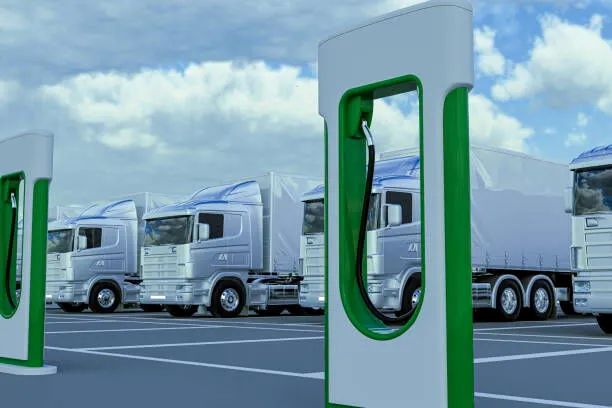


What Is EV Fleet Charging? What is Electric Vehicle Fleet Charging?
As a Leading EV Charger Manufacturer in China, LiCB Charge Offers Reliable AC & DC Electric Vehicle Charging Stations and Comprehensive Charging Solutions.
As electric vehicles (EVs) become more popular, companies worldwide are embracing sustainable transportation solutions. For organizations managing multiple vehicles, EV fleet charging has become essential to keep operations running smoothly while reducing environmental impact. But what exactly is EV fleet charging, and why does it matter? This article explains the concept, benefits, and important factors to consider when setting up a fleet charging system.
EV fleet charging is the process of recharging a group of electric vehicles owned or managed by a company. Fleets can include delivery vans, buses, ride-sharing cars, or service vehicles. Unlike personal EV charging, fleet charging requires a strategic plan that takes into account vehicle usage, charging speed, energy needs, and infrastructure to keep all vehicles charged and ready for use without causing downtime.
Though EVs might have a higher upfront cost than traditional vehicles, they save money over time. Electricity is cheaper than gasoline or diesel, and EVs have lower maintenance costs. Additionally, many governments offer tax incentives and rebates for companies that invest in EVs and charging infrastructure, lowering the total cost of ownership.
EV fleets reduce greenhouse gas emissions and air pollution by eliminating tailpipe emissions, which is especially important for companies operating in cities. Pairing EV charging with renewable energy sources like solar power can further reduce a fleet’s carbon footprint, making transportation greener.
EVs are quieter and smoother to operate, reducing noise pollution and improving driver comfort. Fleet managers can schedule charging during off-peak hours to save on energy costs. Advanced fleet management tools allow real-time tracking of battery levels and vehicle health, helping optimize charging schedules and routes.
AC Chargers: Ideal for overnight or long-duration charging; slower but cost-effective for vehicles that can charge while parked for long periods.
DC Fast Chargers: Provide rapid charging, perfect for vehicles needing quick turnaround times, such as delivery trucks or emergency vehicles.
Smart Chargers: Enable remote monitoring and control, load balancing, and charging optimization based on energy demand and rates.
Assess Charging Needs: Understand your fleet’s daily mileage, driving patterns, and operational hours to decide how many chargers you need and what type.
Choose Appropriate Equipment: Match chargers to your vehicles’ requirements, balancing cost and speed. Plan for future growth to ensure scalability.
Optimize Charger Placement: Install chargers where vehicles idle most, like depots or loading zones, to minimize downtime. For multi-region fleets, place chargers strategically along common routes.
Adopt Early: Gain advantages from government incentives and develop expertise with EV technologies ahead of competitors.
Monitor State of Charge (SOC): Use fleet software to track battery levels and prevent downtime or overcharging.
Use Charging Alerts: Stay informed on charging status with notifications to improve scheduling and avoid delays.
Understand Driving Range: Plan routes according to vehicle range and conditions to optimize efficiency and prevent unnecessary stops.
EV fleet charging offers businesses a pathway to sustainable, cost-efficient, and reliable transportation. By carefully evaluating charging needs, selecting the right equipment, and optimizing infrastructure, companies can lower costs, reduce emissions, and boost operational performance. Early adopters who embrace smart charging solutions will lead the way in the rapidly evolving landscape of electric mobility.Know more about Google SEO Directory
